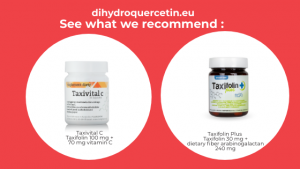Hiperglycaemia and oxidative stress activate a few bad trails, such as the poliol trail, kinases protein C (PKC), final products of advanced glycation of proteins (AGEs) and heksozoamin that which are responsible for the pathological changes in the blood microcirculation and retinal microcirculation and nerve cells and glial.
Oxidative stress in diabetes is the result of high concentrations of glucose and fatty acids. This plays an important role in the pathogenesis of diabetes and its complications. Its pathogenic activity involves, inter alia, on the inhibition of the synthesis of insulin in pancreatic beta cells and inhibition of signal transmission in target cells with an insulinic. This action contributes to the development of insulin resistance and induce changes in the walls of the blood vessels leading to the complications of diabetes.
Complications include damage to the retina, called as diabetic retinopathy. Diabetic retinopathy is formed as a result of damage to the small blood vessels that nourish the retina, leading to a brain hemorrhage in the eyeball. Increasingly scientists carry out research on the effectiveness of the use of antioxidants, which may have a potential impact on metabolic changes in diabetic retinopathy. In view of the good prognostic antioxidant properties dihydroquercetin (taxifolin) it has been decided to carry out control tests in the field of health support blood vessels in diabetics.


Researchers at the Medical Academy in Moscow conducted a study of the impact of dihydroquercetin (taxifolin) in reducing the progression of diabetic retinopathy in patients with type 2 of diabetes. The study involved (with the Hb A1c-6.69 ± 0.2%) 40 patients (16 men and 24 women), at the age of 56.5 ± 8.5 years, diabetes duration of 0.4 ± 0.12 and body mass index 33.3 ± 6.3 kg/m2.
Patients randomly assigned to groups.
The first group subject to therapy that reduces the level of sugar in the blood (metformin, 2000-2500 mg/day orally) and taxifolin at a dose of 120 mg/day for a period of 12 weeks.
The second group accepts only metformin. Administration of dihydroquercetin patients with type 2 of diabetes resulted in a significant decrease in HbA1c values of 6.69 ± 0.15 (p < 0,01).
This decrease was accompanied by improved glucose fasting and postprandial, which could be associated with a reduction in the manufacture of active forms of oxygen during the metabolism of carbohydrates, and as a result, reduce the formation of glycosylation end non-enzymatic products. It was noted that a reduction in glucose-lowering drugs doses, without changing the underlying blood sugar level indicates increased sensitivity of tissues primarily in the liver, in the direction of circulating insulin, which, in the opinion of scientists, lowers glucose and gluconeogenesis. Insulin sensitivity was carried out using two methods: HOMA-IR and ISI.
To exclude fluctuations in variability assessment of insulin sensitivity were carried out at the same time, oral glucose tolerance test, during which patients continued their basic treatment to lower blood sugar levels, causing a reduction in glucose and gluconeogenesis. To confirm the correlation between oxidative stress and insulin resistance, carried out an analysis of the correlation between the level of secondary product LPO MDA LDL and an indicator of insulin resistance HOMA-IR. There was a direct correlation for these variables (R = 0,755, p < 001). Therefore, a reduction in oxidative stress induced by an antioxidant dihydroquercetin was accompanied by reduction of insulin resistance, which shows its relation with respect to the level of oxidative stress.
It was noted that the administration of natural flavonoids has led to a significant decrease in MDA in Plasma lipoproteins, cholesterol decrease (CC) and triglycerides (TG) to levels similar to control conditions but also dampen the dihydroquercetin process of diabetic retinopathy and strengthened blood vessels in the eyeball
1/Antioxidants in Herbs, Old and modern medicine, Dr. Henry Rozanski, 2011http//rozanski.li/? p = 2395
2/Antioxidants in prevention and therapy of type II diabetes Dr. d. Rosołowska-Huszcz, Professor of WARSAW AGRICULTURAL UNIVERSITY, Department of nutrition, Depts. Teachings on human nutrition and consumption, the school of life sciences, Nowoursynowska, food. Science. Technology. In 2007, quality 6 (55), 62-70.
3/Antioxidant Effects of Bioflavonoid Diquertin in Complex Therapy of Type 2 Diabetes. Nedosugova, L.V. (Candidate of Medical Sciences, Sechenov Moscow Medical Academy)
4/Mechanisms Underlying Diquertin-Mediated Regulation of Neutrophil Function in Patients with Non-Insulin-Dependent Diabetes Mellitus N. F. Fedosova, S. V. Alisievich, K. V. Lyadov, E. P. Romanova, I. A. Rud’ko, and A. A. Kubatiev Translated from Byulleten’ Eksperimental’noi Biologii i Meditsiny, Vol. 137, No. 2, pp. 164-167, February, 2004 Original article submitted September 17, 2003, Bulletin of Experimental Biology and Medicine, No. 2, 2004 General Pathology and Pathological Physiology
